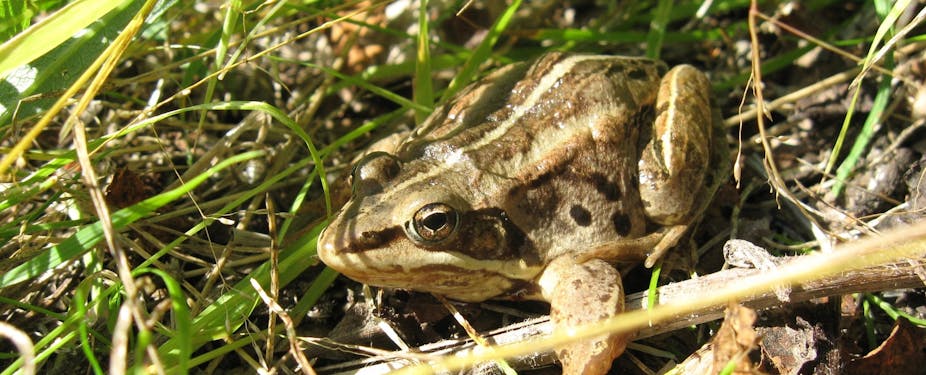For life to persist, it must tolerate its environment. The depth of an arctic winter is formidable, and is most notably overcome by hibernation. But some reptiles and amphibians survive by allowing their bodies to freeze. Wood frogs, for example, can survive even when up to two-thirds of the water in their bodies is frozen and reemerge unscathed when summer arrives.
One way to gain insight into the evolution of freeze-tolerance is to study whether geographically separated populations exhibit differences in their ability to tolerate sub-zero temperatures. Some of these populations experience harsh arctic winters while others do not, so the differences between them can be telling.
Professor Jon Costanzo and colleagues decided to investigate these differences in a recent study published in The Journal of Experimental Biology. They used the wood frog, Rana sylvatica, as their study species - a particularly appropriate choice as this frog inhabits a broad geographic range in America, from northern Georgia in the south to Alaska in the north.
For the study, frogs were collected from Alaska at the end of summer. Of these, some were sampled for immediate analysis as a group dubbed “late-summer frogs”. The others were placed in individual housing and acclimatised to winter conditions over a five-week period.
This housed group was then divided into two sub groups. The “fall frogs” were observed after the initial five-week period while the “winter frogs” were kept in hibernation for eight weeks before experimentation. Wood frogs were also collected from Ohio, a more temperate location, and were prepared in a broadly similar way.
The researchers therefore had several groups of frogs that had each experienced winter in slightly different ways. Using these frogs, they conducted three experiments. The first was an acclimatisation experiment which investigated physiological changes in blood and tissue metabolite concentrations and body measurements in the Alaskan late-summer, fall and winter-frogs and the Ohioan winter-frogs.
The second, a freeze/thaw time-course experiment, saw frogs from both populations frozen and thawed using a previously established protocol. Frogs were frozen for up to 48 hours, with some being removed and sampled at intervals.
Third, freeze tolerance experiments were carried out on ten of the Alaskan frogs. In the first trial, ten frogs were cooled to -8°C. Of these, five were subsequently cooled to -12°C, and four to -16°C. Also, to test tolerance to prolonged freezing at a relatively mild temperature, two groups of four frogs were cooled to -4°C and held at this temperature for either 8 or 12 weeks.

The acclimatisation experiment found no differences in morphological measures such as body mass, body water content, body length between the late-summer, fall or winter frogs from Alaska. By contrast, they found that the Ohioan frogs tended to be larger than their Alaskan counterparts. Also, compared to the Ohioan winter frogs, the Alaskan frogs had less coelomic body fat and more anti-freeze-like substances, such as glucose and urea, around vital organs and other vulnerable parts of their bodies. This suggests that the Alaskan frogs were better suited to dealing with freezing than the Ohioan frogs.
The freeze-thaw time course experiment revealed similar results. During experimental freezing, Alaskan frogs accumulated less ice in important body areas and recovered from freezing better than the Ohioan frogs. Again, this was due to Alaskan frogs being better able to defend themselves against freezing by increasing the amount of the anti-freeze-like-agents around their vital organs.
The freeze tolerance trials of Alaskan frogs found that nine of the ten frogs that were cooled to -8°C were able to turn the right way up after being placed on their back (righting response) two days after thawing. The other frog recovered after seven days. Five frogs from the group of nine that recovered after two days were then cooled to -12°C while the remaining four were cooled to -16°C. Again, all exhibited the righting response two days after thawing (although, one of the frogs cooled to -12°C subsequently died). The frogs that were held in “winter” for longer periods fared less well. Only two of the four frogs held for eight weeks survived and all four of those held for 12 weeks died.
The study shows that local adaptations help the frogs to survive extreme environmental conditions and may even have implications for humans. For example, understanding this phenomenon may have applications for improving transportation of human tissue destined for transplants.

